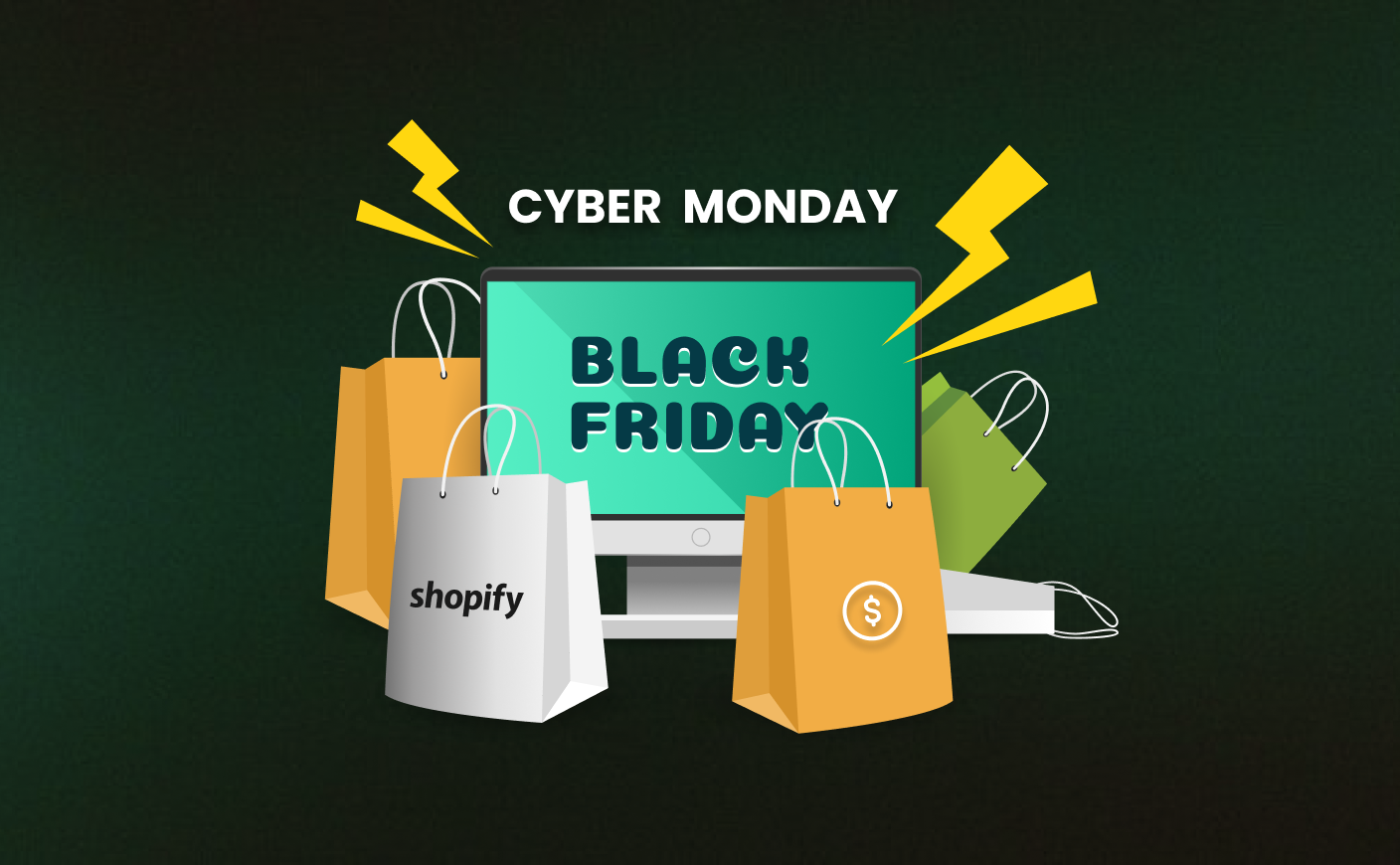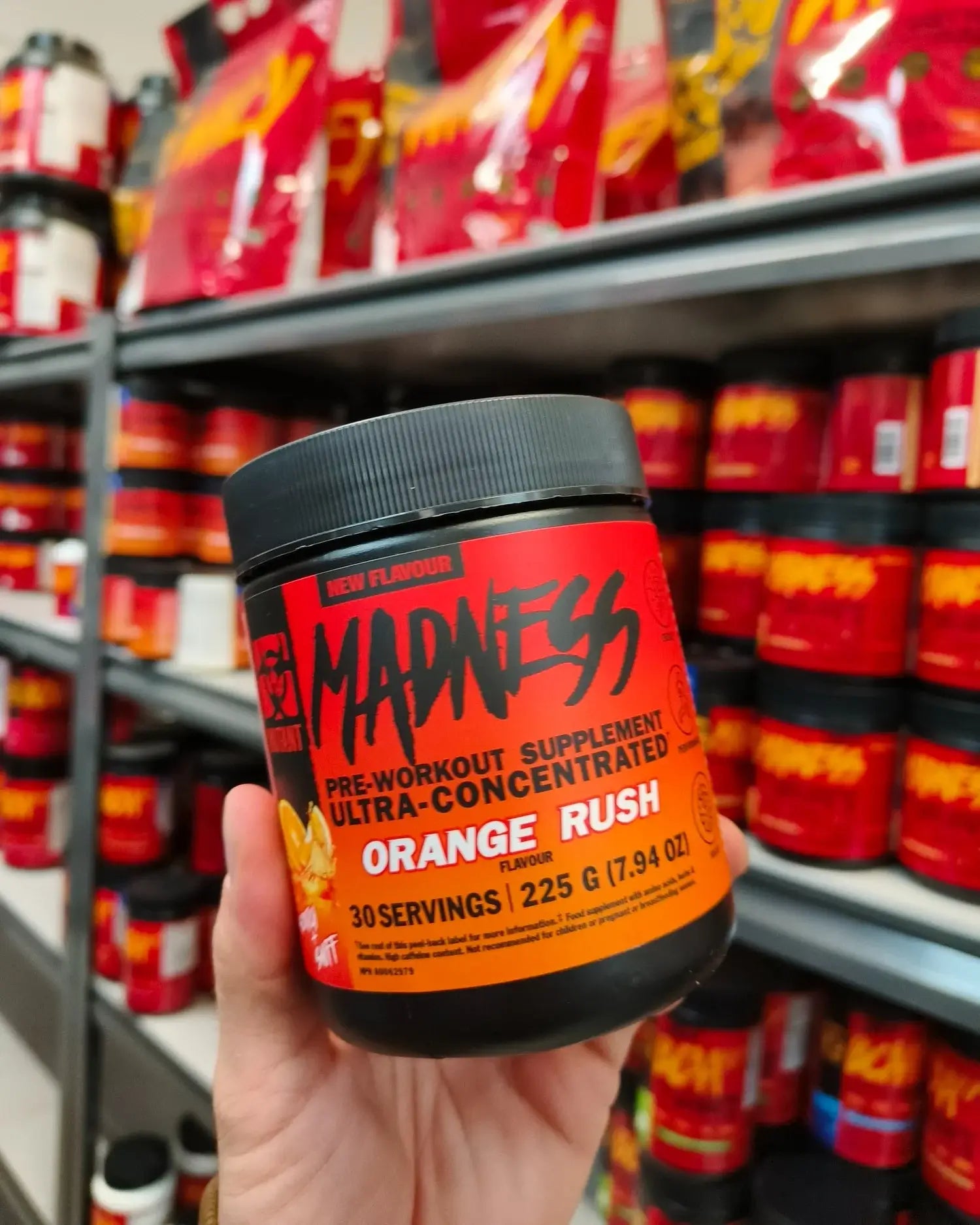What Makes a Shopify Store Look and Sell Like a Luxury Brand?
AR vs VR in Shopify
Shopify Plus
Shopify Plus Development Agency

The way people buy luxury has changed forever. In 2025, luxury ecommerce sales are projected to surpass $91 billion, with digital channels accounting for 30% of all luxury purchases worldwide. (source: Shopify)
What once felt exclusive to flagship stores is now happening on mobile screens and Shopify storefronts.
However, this growth comes with a challenge.
Shoppers expect more than a place to transact. They want digital spaces that feel refined, curated, and trustworthy. A premium product shown in an average-looking store simply won’t sell.
That’s what this guide is about.
Backed by more than a decade of building and growing Shopify stores for high-end brands, we break down the exact strategies that make a store look and sell like luxury.
The Complete Guide to Creating a Luxury Brand Experience on Shopify Store
We break down the strategies top Shopify brands use in 2025 to make their stores look, feel, and sell like luxury.
#1 Master Visual Design for a Premium Aesthetic
Luxury design starts before a shopper even clicks “add to cart.” The way your store looks instantly shapes how customers value your products.
Choose a theme that feels exclusive
Your theme is the foundation of your brand’s look. Shopify’s 2.0 themes like Stiletto and Craft create layouts that feel modern and editorial, similar to a glossy fashion magazine.
A cluttered free theme, on the other hand, makes your store feel mass market.
Build a refined color and font system
Luxury stores rely on design choices that signal confidence:
-
Deep black, muted neutrals, and soft gold accents
-
Serif fonts such as Playfair Display for authority in headlines
-
Clean sans-serif fonts like Helvetica for readability
-
Gentle fade-in animations that add elegance without hurting speed
Invest in visuals that sell the story
Luxury buyers expect visuals that feel immersive:
-
Studio-quality photography in 4K resolution
-
360 degree product spins for detailed exploration
-
AR try-on features with apps like Threekit
-
Shoppable videos that can lift engagement by up to 80%
Use whitespace as a design tool
Whitespace creates breathing room and signals exclusivity. Brands such as Kith and Vuori keep 40 to 50% of the page clear, turning product pages into curated galleries.
Also read: How to sell on Shopify without spending big on ads
#2 Create a Luxury Shopping Journey That Feels Effortless
Making a true luxurious online store means every click should feel intuitive, quick, and personal.
Design for mobile-first luxury
In 2025, more than 60% of luxury purchases happen on mobile, so your store must shine on smaller screens. (source: nethority)
-
Use responsive layouts that adapt smoothly
-
Use Shopify Hydrogen for headless builds as it can deliver load times under two seconds
-
Prioritize AMP-ready pages to keep the browsing flow fast and fluid
Simplify navigation like a concierge
Luxury is about convenience. Your navigation should guide customers, not confuse them.
-
Mega menus with curated categories, such as New Arrivals with exclusivity tags
-
Predictive search powered by tools like Searchanise
-
Sticky carts that stay visible for frictionless checkouts
Add personalization that feels bespoke
Customers expect custom experiences from premium brands.
-
Use Shopify’s Personalization API or apps like Nosto
-
Offer recommendations based on browsing history
-
Add luxury touches such as custom monogram previews, a rising trend in 2025
Make luxury accessible to all
Exclusivity doesn’t mean excluding. Inclusive design builds trust and broadens your audience.
-
Follow WCAG accessibility guidelines
-
Use clear alt text and keyboard-friendly navigation
-
Choose color palettes that remain readable for color-blind shoppers
Also read: Why more brands are choosing blended Shopify B2B stores
#3 Showcase Products that Create a Desire
Luxury is as much about how you present your products as the products themselves. A well-curated presentation makes customers feel like they’re stepping into an exclusive boutique, even if they’re browsing from their phone.
Tell a story, not just features
Instead of bland specs, use copy that pulls people in. Highlight the craftsmanship, the sourcing, and the feeling your product gives.
For instance, a handbag isn’t just leather. It's hand-stitched Italian leather sourced from family-owned tanneries.
-
Keep it short and easy to scan with bullet points
-
Use sensory words that evoke texture, detail, and emotion
Bring products to life with media
Shoppers want to see more than flat photos. You need to show:
-
High-resolution videos that show every angle
-
360° product spins or AR try-ons so they can imagine ownership
-
Sustainability badges like “Carbon Neutral” or “Recycled Materials” that resonate with eco-conscious luxury buyers (70% of them now look for these markers in 2025)
Price with confidence
Luxury shoppers don’t want discounts, they want exclusivity. Present your pricing boldly, and add touches like:
-
Limited-edition tags
-
Pre-order waitlists for upcoming collections
-
Early access drops for VIP customers
Let others do the talking
Social proof is powerful when it feels curated. Highlight:
-
Customer reviews with photos using apps like Loox
-
Press mentions (“As Seen in Vogue”)
-
Collaborations with tastemakers or trusted influencers
Pro tip from experience
Bundle products in a way that feels intentional. Instead of random add-ons, create “Curated Sets” that look and feel bespoke. We’ve seen this single change increase AOV by more than 30% in luxury Shopify stores.
#4 Build a Brand Identity That Feels Truly Exclusive
Luxury isn’t just about what you sell. It’s about the world you create around your brand, the stories you tell, the values you stand for, and the experience your customers feel at every touchpoint.
Use storytelling to build depth
Luxury shoppers want connection, not just products.
-
Share the store behind your brand or a glimpse behind the scenes.
-
Show founder-led videos
-
You can also use heritage narratives or editorial-style blog posts
All these ideas will give your brand a new dimension as well as help with your Shopify SEO.
Consistency builds trust
Every touchpoint should feel unmistakably yours, from your homepage to your packaging.
Keep your logo, fonts, colors, and tone aligned.
Shopify’s Brand Assets feature makes it easier to lock in that consistency so nothing feels off-brand.
Highlight your values
Modern luxury buyers are conscious buyers. If you’re committed to sustainability or ethical sourcing, bring it to the forefront. For example:
-
Add clear sustainability badges on product pages
-
Use apps like EcoCart to show carbon offsets at checkout
-
Share stories about your supply chain or recycling efforts
Create an inner circle
Exclusivity is part of luxury. Build community by offering VIP newsletters, early access drops, or members-only shopping sections.
Shopify’s customer account features make it easy to give your top buyers a more personalized experience.
Luxury is lifelong
Luxury doesn’t stop at the sale since the journey continues long after the package is delivered. Here's what you can do:
-
Make unboxing a moment in itself, with custom packaging, handwritten notes, or even QR codes that link to care guides.
-
Have post-purchase touchpoints like concierge-style WhatsApp support or VIP aftercare. It shows that your customers are valued,not just transacted.
For instance, Tiffany sends personalized thank-you emails with product care tips, making the brand feel invested in each client beyond checkout.
#5 Marketing That Attracts and Converts High-Value Shoppers
Luxury customers don’t respond to generic marketing. They expect personalization, exclusivity, and a sense of belonging. Therefore your marketing should feel like an invitation, not a sales pitch.
Blend online and offline experiences
Luxury thrives on touch and experience. For instance, you can:
-
Use pop-up events and trunk shows
-
Bring products to life with AR, letting customers explore them online and offline
-
Use Shopify POS to connect in-person moments with online store
Personalize every message
Email and SMS remain two of the most powerful tools for luxury brands, but they need to feel bespoke. With platforms like Klaviyo, you can create segmented campaigns for:
-
Exclusive previews before new drops
-
VIP-only events or early access
-
Personalized styling suggestions based on past purchases
Luxury brands that master personalization regularly see 40% or higher open rates.
Own the search results
SEO is less about ranking and more about showing up where your audience is searching.
-
Focus on long-tail queries like luxury sustainable handbags on Shopify
-
Use schema markup to discover rich snippets in AI-driven search results.
-
Pair this with editorial-style content such as style guides or curated lookbooks that double as shoppable experiences.
Invest in visual-first advertising
Luxury is visual. Platforms like Instagram and Pinterest are perfect for ads that emphasize detail and scarcity.
Retarget visitors with dynamic product ads that highlight exclusivity like “only a few left” rather than discounts.
Build credibility through partnerships
Today’s luxury shoppers trust authenticity over celebrity. Micro-influencers, stylists, and even niche community leaders can provide endorsements that feel real.
Track ROI directly with Shopify’s analytics to see which partnerships drive the most loyal buyers.
Community and Exclusivity Mechanics
Exclusivity is at the heart of luxury, but it’s growing fast. Instead of just VIP newsletters, brands are creating deeper, harder-to-replicate circles of loyalty:
-
Private client portals - Give select shoppers early access to new collections.
-
Made-to-order experiences - Let loyal customers commission or customize pieces.
-
Token-gated drops - Experiment with NFT access for digital-savvy buyers.
-
Invite-only events - Host private trunk shows, online or offline, for top clients.
-
Community perks - Build spaces where members connect, not just shop.
Pro tip from the field
Measure conversion as well as lifetime value (LTV). The most successful luxury brands nurture relationships long after checkout thus turning one-time buyers into lifelong advocates.
Also read: 8 Proven tips to increase your Ecommerce conversion rate
#6 Technical Foundations That Keep Your Luxury Store Ahead
In a luxury shopping experience, the backend matters as much as the visuals and branding. Getting the technical side right ensures your store performs smoothly while staying future-ready.
Prioritize speed and security
Luxury shoppers don’t wait. Therefore, you need to:
-
Compress images with tools like TinyIMG
-
Enable Shopify’s CDN
-
Regularly monitor your Core Web Vitals. Aim for scores above 90.
This not only helps you to get smoother customer experience but also maintain strong visibility in Google’s AI-driven rankings.
Think global, sell local
Cross-border ecommerce is booming in 2025. With Shopify Markets, you can support multi-currency checkout, local payment methods, and region-specific content.
This helps you sell smoothly to international customers without losing the sense of exclusivity.
Rely on data, not assumptions
Every luxury brand has unique buyer behavior. You can:
-
Use Google Analytics 4 to track patterns
-
Layer it with heatmaps for deeper insights
-
Regularly A/B test call-to-action buttons, page layouts, and even checkout flows to keep improving your performance.
Build with the right app ecosystem
Premium experiences often need premium apps. Consider:
-
Recharge for subscription-based luxury goods
-
Gorgias for concierge-style customer support
-
Threekit for interactive 3D product visuals
#7 The Role of AI and Hyper-Personalization in Luxury
AI is no longer just backend optimization. In luxury, it’s becoming the stylist, concierge, and storyteller. Done right, it enhances the human touch instead of replacing it.
-
AI styling assistants on Shopify can suggest complete outfits based on purchase history.
-
Predictive replenishment reminds clients to reorder perfume or skincare just as they’re running low.
-
AI-powered content can create polished brand storytelling that feels editorial, not automated.
Example: Louis Vuitton introduced an AI chatbot framed as a “digital stylist,” helping customers discover products in a way that still feels refined and personal.
Also read: Best Shopify B2B services every brand needs in 2025
Shopify Brands Doing It Right In 2025 - Case Studies
It’s one thing to talk about luxury strategies. It’s another to see how real Shopify brands are putting them into practice. Here are two examples of stores that show what works when you want to blend exclusivity, storytelling, and easy shopping.
Rebecca Minkoff – Making Tech Feel Luxurious
Rebecca Minkoff has always been ahead of the curve, but what sets their Shopify Plus store apart is how they use technology without losing elegance. Shoppers can spin handbags in 3D, zoom in on the stitching, or even “try” pieces in augmented reality.
By integrating this, they were able to achieve:
-
Increase in add to cart by 44%
-
Increase in order placement by 27%
-
AR views saw a 65% increase in purchases
(source: Shopify)
Takeaway: Luxury buyers want confidence before they spend. AR and 3D visuals give them that assurance while making the shopping experience feel special.
Kylie Cosmetics – Scarcity That Creates Frenzy
Kylie Cosmetics transformed every launch into an event people couldn’t miss.Their Shopify Plus store was more about creating a frenzy than selling lip kits.
Scarcity became their biggest marketing tool, with limited-edition drops selling out in seconds and fans waiting for the next release like a concert ticket sale.
By integrating this approach, they were able to achieve:
-
Sold out product launches in seconds
-
$300 million in revenue by the end of 2016
-
Reliably handled spikes of 200,000 simultaneous visitors without downtime
(source:wikipedia)
Takeaway: Scarcity, when paired with flawless site performance, makes luxury feel urgent. If you can pull it off without glitches, you build both desire and trust.
Final Thoughts
Luxury isn’t just a product, a website, or a checkout experience, it’s a feeling that lingers long after a customer leaves your store. Creating that sense of exclusivity, care, and storytelling is what turns first-time buyers into loyal advocates.
In 2025, the brands that succeed are the ones who treat every interaction as a chance to improve their customer experience by blending innovation, elegance, and attention to detail at every touchpoint.
Frequently Asked Questions
How can I make my Shopify store feel luxurious?
Focus on details like stunning visuals, clean fonts, smooth navigation, and special touches that make every interaction feel premium.
What Shopify tools help create personalized experiences for luxury shoppers?
Use Shopify’s personalization tools, apps like Nosto, and POS features to offer custom recommendations and VIP experiences that feel personal.
Why are AR and 3D product views important for luxury stores?
They let shoppers explore texture, size, and quality online giving confidence before buying while making the experience feel special.
How does Shopify Markets help luxury brands sell worldwide?
It allows you to show local currency, payment options, and content for each region so your brand feels consistent and premium everywhere.
How can I make luxury shoppers feel valued after purchase?
Offer thoughtful touches like beautiful packaging, thank you notes, care guides, VIP support, and loyalty perks to keep customers coming back.















